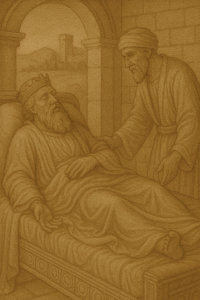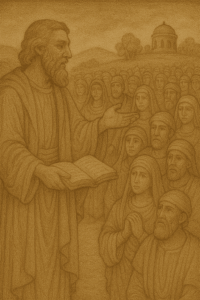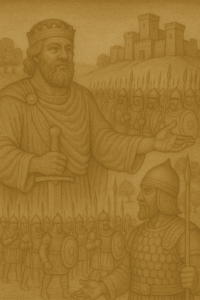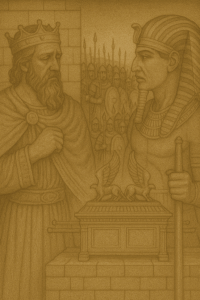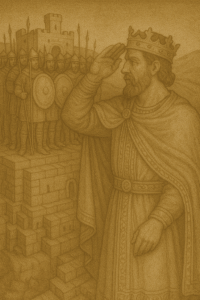A Sanctuary Equipped for Worship and Reverence.
In the pages of Exodus, chapter 27 meticulously guides the Israelites in crafting the Tabernacle’s interior furnishings, transforming the portable sanctuary into a place of worship and divine encounter. These furnishings, symbolic and functional, served as tools for fostering a deep connection between God and His people.
The Altar of Burnt Offering: A Place of Dedication and Devotion.
The Altar of Burnt Offering, situated at the entrance of the Tabernacle, served as the focal point for sacrificial rites. It was constructed from acacia wood and overlaid with bronze, symbolizing strength and purity. The altar’s fire represented God’s consuming presence and the Israelites’ dedication to Him.
The Table of Showbread: A Daily Offering of Gratitude.
The Table of Showbread, located in the Holy Place, held twelve loaves of bread that represented the constant renewal of God’s provision and the Israelites’ dependence on Him. The fresh bread was replaced every Sabbath, symbolizing God’s faithfulness and the cycle of creation and sustenance.
The Lampstand: Illuminating the Presence of God’s Guidance.
The Lampstand, also in the Holy Place, consisted of seven branches that held seven lamps. It symbolized God’s illumination and guidance, illuminating the Tabernacle and representing the perpetual presence of God among His people. The lamps were kept burning perpetually, reflecting the constant presence of God’s wisdom and direction.
The Enclosure: A Safeguard for the Sacred Space.
The Enclosure, surrounding the Tabernacle, was a courtyard made of fine linen curtains and equipped with hanging curtains and screens. It served as a protective barrier, separating the sacred space from the outside world and enhancing the Tabernacle’s sanctity.
Transforming the Tabernacle into a Vibrant Center of Worship.
The furnishings of the Tabernacle, meticulously crafted and imbued with symbolism, transformed the portable sanctuary into a vibrant center of worship and divine encounter. These sacred objects served as reminders of God’s presence, His provision, and His guidance, fostering a deep connection between the Israelites and their Creator.
Applications in Modern Society.
The furnishings of the Tabernacle offer enduring lessons for our spiritual lives. They remind us of the importance of creating sacred spaces in our homes, churches, or personal retreats. These spaces can serve as places of prayer, reflection, and spiritual growth, allowing us to connect with God and experience His presence in our daily lives.
Conclusion.
Exodus 27’s meticulous instructions for the Tabernacle’s interior furnishings reveal the Israelites’ deep reverence for God and their dedication to creating a sacred space for His presence. These details echo through the ages, reminding us of the power of creating sacred spaces in our own lives, where we can experience God’s presence, seek His guidance, and grow in our spiritual journey
